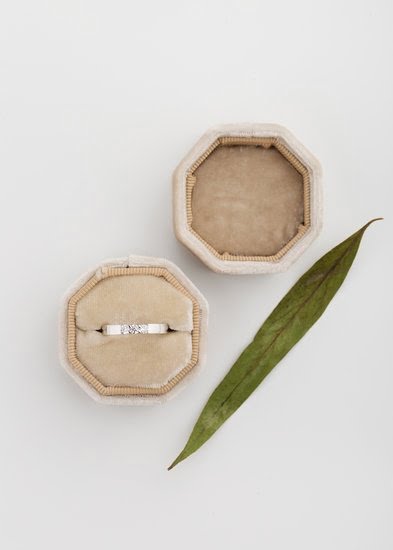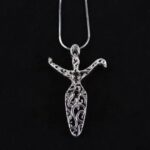Introduction
Jewelry photography is a speciality within product photography, as it requires skill and attention to detail in order to show off the product’s beauty. From small beads and simple necklaces to high-end earrings and intricately designed bracelets, jewelry needs to be photographed in such a way that emphasizes its features and showcases its appeal.
In order to do this, there are certain considerations that need to be taken into account, such as creating a pleasing composition for the shot, what lighting should be used, whether any props should be used as compliments or supports for the item being photographed, and most importantly how best to capture the crafting elements of the jewelry.
Soft lighting is often ideal for jewelry photography as it helps bring out any detailing on pieces like rings or ornate necklaces without looking too brightly lit. Natural light can also be used but balance is key so that shadows don’t overwhelm the image. Props can also add a lot of effect when photographing jewelry by adding interest and depth; simple backgrounds or fabric can help provide contrast without taking away from the actual piece you are photographing. It’s also important to make sure that all applicable elements of each type of jewelry you’re shooting is captured; everything from coloration right through to any metallic sheen should be visible in the image(s). Lastly attention must be paid to framing and positioning when creating shots; All angles should capture not only how beautiful the piece looks in reality but also bring out its lifelike qualities on screen.
With attention paid towards these various elements while shooting your jewelry items you can create stunning images with great impact. When done right it can help showcase your pieces perfectly and attract potential customers who may not have considered them before seeing them presented professionally online or elsewhere.
Lighting
Lighting is an important factor when it comes to photographing jewelry and should never be overlooked. By using the right lighting techniques you can create stunning professional-looking images of your pieces. When setting up your lighting, start by ensuring that you have consistent light from multiple sources. This will reduce shadows and enable the jewelry to be seen in its most flattering way.
There are various different types of lighting equipment used for photographing jewelry, from small clip-on studio lights, ring lights and continuous softboxes, to off-camera flashes or strobes with various modifiers such as umbrellas and grids. A light meter or incident meter may also be used to measure the intensity of the light that will fall onto the subject during capture. Experiment with these tools until you find which one works best for you. Additionally, if shooting at night, consider purchasing a flash trigger so your camera can accurately sync with available flashes and strobes.
Camera Settings
The best camera settings for photographing jewelry will depend on the type of jewelry that you’re shooting and the effects you want to create. Generally, using a large aperture (a low f-stop) is favorable as this allows for a shallow depth of field and the ability to isolate your subject from its background. This can help create an attractive soft-focus look. If a very fine amount of detail is desired, then a smaller aperture may be required – such as f/16 or higher.
Regarding shutter speed, having a fast shutter speed will be necessary in order to avoid camera shake and reduce blurriness resulting from movement – especially if photographing highly reflective jewelry. This can range anywhere between 1/60th of a second or faster.
There are other important factors that come into play when shooting jewelry such as lighting setup and angle, but these basic settings should get you started with achieving quality images
Angling and Backgrounds
When photographing jewelry, angling and backgrounds are key components to creating beautiful and eye-catching photos. Using a tripod will help keep your shots steady and also provide you with more control of the angles that you choose for the shoot. When considering angles, think about how the light will affect the piece of jewelry in each direction. For example, dramatic over-the-shoulder lighting will make for interesting photographs with unique shadows and shapes.
As far as backgrounds go, certain styles create a more professional look than others. Try using paint rollers or pieces of fabric accordion folded against a wall. These strategies yield crisp lines and softer color backgrounds, perfect for making jewelry stand out in photos. You can also consider using backdrops such as paper flowers or crushed gems/colored stones to create a dreamy quality to your shots.
Retouching
Using digital retouching is a great way to ensure that your jewelry photographs look their best. With digital retouching, you can improve the color and clarity of an image without negatively affecting how it looks overall. You can also use it to remove any distractions or blemishes from your pictures.
There are numerous tools available for achieving the perfect look when photographing jewelry. Programs such as Adobe Photoshop and Lightroom are excellent for comprehensive post-processing, enabling users to make precise changes with great accuracy. Many experienced photographers will also use various Photoshop techniques such as spot healing and cloning to further polish images. They can also add other effects like vignetting and sharpening to complete the necessary touchups.
Editing Software
Lighting: It is important to use the appropriate lighting for jewelry photography. A lightbox will provide even and non-glaring light, and shooting against a white backdrop will help reflect light onto the jewelry and ensure it stays focused. There are also great options for using natural lighting as long as you make sure to avoid sharp shadows or overexposure.
Camera Settings: Choosing the right lens focal length, aperture, shutter speed, and ISO is essential. A longer lens can help you to capture more intricate details of the piece with sharper focus, while an open aperture creates a shallow depth of field so that your main subject stands out better. It’s also important to adjust the ISO properly, depending on how much ambient lighting you have available while taking shots.
Props & Accessories: Adding props can be helpful in adding more contrast and interest to your shots. Staging different accessories around the piece can bring out its unique features, like placing other colored gems near a colorful stone in order to give it more visibility or by using lace or textiles in which you can drape some of your pieces for a softer look. The possibilities are endless!
Conclusion
Jewelry photography is a very important visual tool that sparkles the attention and admiration of customers, so it is essential to take high-quality product photos. In order to create the best photos, photographers should use a tripod stand and pay careful attention to the direction of the light. Additionally, they should also use cameras with large sensors or lens attachments. Furthermore, it is critical that all relevant pieces of the jewelry are visible in photos, along with background detail that provides context for each piece. Finally, good post-production work can be used to improve sharpness and color accuracy in your photographs. If you’re looking for more information about jewelry photography, there are plenty of resources available online such as tutorials and tips from professional photographers.

Welcome to my jewelry blog! My name is Sarah and I am the owner of this blog.
I love making jewelry and sharing my creations with others.
So whether you’re someone who loves wearing jewelry yourself or simply enjoys learning about it, be sure to check out my blog for insightful posts on everything related to this exciting topic!





